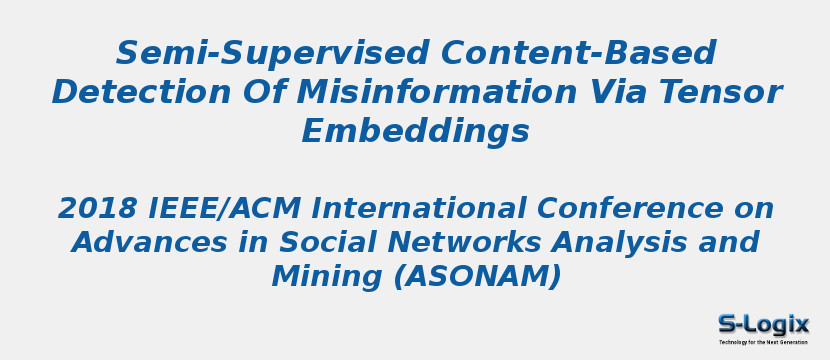Research Area: Machine Learning
Fake news may be intentionally created to promote economic, political and social interests, and can lead to negative impacts on humans beliefs and decisions. Hence, detection of fake news is an emerging problem that has become extremely prevalent during the last few years. Most existing works on this topic focus on manual feature extraction and supervised classification models leveraging a large number of labeled (fake or real) articles. In contrast, we focus on content-based detection of fake news articles, while assuming that we have a small amount of labels, made available by manual fact-checkers or automated sources. We argue this is a more realistic setting in the presence of massive amounts of content, most of which cannot be easily factchecked. To that end, we represent collections of news articles as multi-dimensional tensors, leverage tensor decomposition to derive concise article embeddings that capture spatial/contextual information about each news article, and use those embeddings to create an article-by-article graph on which we propagate limited labels. Results on three real-world datasets show that our method performs on par or better than existing models that are fully supervised, in that we achieve better detection accuracy using fewer labels. In particular, our proposed method achieves 75.43 percent of accuracy using only 30 percent of labels of a public dataset while an SVM-based classifier achieved 67.43 percent. Furthermore, our method achieves 70.92 percent of accuracy in a large dataset using only 2 percent of labels.
Keywords:
Semi-Supervised
Detection
Tensor Embeddings
Fake news
classification models
Machine Learning
Deep Learning
Author(s) Name: Gisel Bastidas Guacho, Sara Abdali, Neil Shah, Evangelos E. Papalexakis
Journal name: Machine Learning
Conferrence name:
Publisher name: arxiv
DOI: arXiv:1804.09088
Volume Information:
Paper Link: https://arxiv.org/abs/1804.09088
